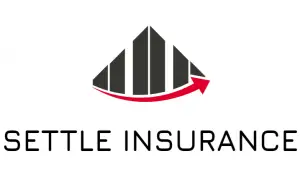“This post may contain affiliate links, if you click a link we may earn a commission if you purchase from that merchant.”
Car insurance is a crucial aspect of owning and operating a vehicle. It provides financial protection in the event of an accident, theft, or damage to your car. Car insurance is not only important for your own peace of mind, but it is also a legal requirement in most states. Without proper car insurance coverage, you could face hefty fines, license suspension, or even legal trouble.
In the United States, car insurance is mandatory in all states except New Hampshire and Virginia. The minimum requirements for car insurance vary by state, but typically include liability coverage. This type of coverage helps pay for the damages and injuries you cause to others in an accident. It is important to familiarize yourself with the specific car insurance requirements in your state to ensure that you are adequately covered.
Table of Contents
Key Takeaways
- Car insurance coverage is important to protect yourself and others in case of accidents or damages.
- Liability coverage is required by law and covers damages you cause to others.
- Collision coverage covers damages to your own car in case of an accident.
- Comprehensive coverage covers damages to your car from non-collision incidents like theft or natural disasters.
- Personal injury protection, uninsured/underinsured motorist coverage, and discounts on premiums are additional options to consider when choosing car insurance.
Types of Car Insurance Coverage
There are several different types of car insurance coverage available, each serving a specific purpose. Understanding these different types of coverage can help you make informed decisions about the level of protection you need.
1. Liability Coverage: Liability coverage is the most basic and essential type of car insurance coverage. It helps pay for the damages and injuries you cause to others in an accident. There are two main types of liability coverage: bodily injury liability and property damage liability. Bodily injury liability covers medical expenses, lost wages, and other damages resulting from injuries to others, while property damage liability covers the cost of repairing or replacing someone else’s property that you damage in an accident.
2. Collision Coverage: Collision coverage helps pay for the repairs or replacement of your own vehicle if it is damaged in a collision with another vehicle or object, regardless of who is at fault. This type of coverage is especially important if you have a newer or more expensive car that would be costly to repair or replace.
3. Comprehensive Coverage: Comprehensive coverage provides protection against non-collision related incidents such as theft, vandalism, fire, or natural disasters. It covers the cost of repairing or replacing your vehicle if it is damaged or stolen. Comprehensive coverage is typically required if you have a car loan or lease, as the lender or leasing company wants to protect their investment.
4. Personal Injury Protection (PIP) Coverage: Personal Injury Protection (PIP) coverage, also known as no-fault insurance, helps pay for medical expenses, lost wages, and other damages resulting from injuries sustained in a car accident, regardless of who is at fault. PIP coverage is mandatory in some states and optional in others.
5. Uninsured/Underinsured Motorist Coverage: Uninsured/underinsured motorist coverage provides protection if you are involved in an accident with a driver who does not have insurance or does not have enough insurance to cover the damages. This type of coverage helps pay for your medical expenses, lost wages, and other damages.
Liability Coverage
Liability coverage is a fundamental component of car insurance that protects you financially if you are responsible for causing an accident. It helps cover the costs associated with injuries to others and damage to their property.
There are two main types of liability coverage: bodily injury liability and property damage liability. Bodily injury liability covers the medical expenses, lost wages, and other damages resulting from injuries to others in an accident that you caused. Property damage liability covers the cost of repairing or replacing someone else’s property that you damaged in an accident.
The limits of liability coverage refer to the maximum amount that your insurance company will pay for damages and injuries caused by you in an accident. These limits are typically expressed as three numbers, such as 25/50/25. The first number represents the maximum amount per person for bodily injury liability, the second number represents the maximum amount per accident for bodily injury liability, and the third number represents the maximum amount per accident for property damage liability.
It is important to choose liability coverage limits that adequately protect your assets and financial well-being. If you have significant assets, such as a home or savings, it is recommended to opt for higher liability coverage limits to ensure that you are adequately protected in the event of a serious accident.
Collision Coverage
Collision coverage is an optional type of car insurance coverage that helps pay for the repairs or replacement of your own vehicle if it is damaged in a collision with another vehicle or object, regardless of who is at fault. This type of coverage is especially important if you have a newer or more expensive car that would be costly to repair or replace.
When considering whether to purchase collision coverage, it is important to assess the value of your vehicle and weigh the potential costs of repairs or replacement. If your car is older and has a low market value, it may not be worth paying for collision coverage, as the cost of the coverage may exceed the potential payout in the event of an accident.
The limits of collision coverage refer to the maximum amount that your insurance company will pay for repairs or replacement of your vehicle. It is important to review these limits and consider whether they are sufficient to cover the potential costs of repairs or replacement.
Comprehensive Coverage
Comprehensive coverage is an optional type of car insurance coverage that provides protection against non-collision related incidents such as theft, vandalism, fire, or natural disasters. It covers the cost of repairing or replacing your vehicle if it is damaged or stolen.
Comprehensive coverage is typically required if you have a car loan or lease, as the lender or leasing company wants to protect their investment. However, even if you own your vehicle outright, comprehensive coverage can provide valuable protection against unexpected events that could result in significant financial loss.
When considering whether to purchase comprehensive coverage, it is important to assess the potential risks and costs associated with non-collision related incidents. If you live in an area with high rates of theft or vandalism, or if you frequently park your car in an area prone to natural disasters, comprehensive coverage may be a wise investment.
The limits of comprehensive coverage refer to the maximum amount that your insurance company will pay for repairs or replacement of your vehicle in the event of a covered incident. It is important to review these limits and consider whether they are sufficient to cover the potential costs of repairs or replacement.
Personal Injury Protection (PIP) Coverage
Personal Injury Protection (PIP) coverage, also known as no-fault insurance, is a type of car insurance coverage that helps pay for medical expenses, lost wages, and other damages resulting from injuries sustained in a car accident, regardless of who is at fault. PIP coverage is mandatory in some states and optional in others.
PIP coverage typically includes benefits such as medical expenses, lost wages, funeral expenses, and essential services. The specific benefits and limits of PIP coverage vary by state, so it is important to familiarize yourself with the requirements in your state.
When considering whether to purchase PIP coverage, it is important to assess your own health insurance coverage and the potential costs associated with medical expenses and lost wages. If you have comprehensive health insurance that covers car accident injuries, you may not need PIP coverage. However, if you do not have health insurance or if your health insurance has high deductibles or limited coverage for car accident injuries, PIP coverage can provide valuable financial protection.
Uninsured/Underinsured Motorist Coverage
Uninsured/underinsured motorist coverage is a type of car insurance coverage that provides protection if you are involved in an accident with a driver who does not have insurance or does not have enough insurance to cover the damages. This type of coverage helps pay for your medical expenses, lost wages, and other damages.
Uninsured/underinsured motorist coverage is especially important because there are many drivers on the road who do not have insurance or have insufficient coverage. If you are involved in an accident with one of these drivers, you could be left with significant financial burdens.
When considering whether to purchase uninsured/underinsured motorist coverage, it is important to assess the potential risks and costs associated with being involved in an accident with an uninsured or underinsured driver. If you live in an area with high rates of uninsured drivers or if you frequently drive in areas with heavy traffic or high accident rates, uninsured/underinsured motorist coverage may be a wise investment.
The limits of uninsured/underinsured motorist coverage refer to the maximum amount that your insurance company will pay for your medical expenses, lost wages, and other damages in the event of an accident with an uninsured or underinsured driver. It is important to review these limits and consider whether they are sufficient to cover the potential costs of an accident.
Factors Affecting Car Insurance Rates
Car insurance rates are determined by a variety of factors, including age, gender, marital status, driving record, type of car, location, and credit score. Understanding these factors can help you better understand why your car insurance rates may be higher or lower than average.
1. Age, Gender, and Marital Status: Younger drivers, particularly teenagers, are considered higher risk and therefore tend to have higher car insurance rates. Male drivers also tend to have higher rates than female drivers due to statistical data that shows they are more likely to engage in risky driving behaviors. Married individuals tend to have lower car insurance rates compared to single individuals.
2. Driving Record: Your driving record is one of the most important factors that car insurance companies consider when determining your rates. If you have a history of accidents or traffic violations, you are considered a higher risk and will likely have higher rates. On the other hand, if you have a clean driving record, you may qualify for lower rates.
3. Type of Car: The type of car you drive can also impact your car insurance rates. Cars that are more expensive to repair or replace, or that have a higher likelihood of being stolen, tend to have higher rates. Additionally, cars with high-performance engines or that are classified as sports cars tend to have higher rates due to the increased risk of accidents.
4. Location: Where you live can also affect your car insurance rates. If you live in an area with high rates of accidents or theft, your rates may be higher. Additionally, urban areas tend to have higher rates compared to rural areas due to the increased traffic and congestion.
5. Credit Score: Many car insurance companies use credit scores as a factor in determining rates. Individuals with higher credit scores are considered more responsible and therefore may qualify for lower rates. It is important to maintain good credit in order to secure the best car insurance rates.
Filing Car Insurance Claims
Filing a car insurance claim can be a stressful and confusing process, but knowing what steps to take can help make the process smoother and increase your chances of a successful claim.
1. Steps to Take When Filing a Claim: The first step when filing a car insurance claim is to gather all relevant information about the accident or incident, including the names and contact information of all parties involved, photos of the damage, and any police reports or witness statements. Next, contact your insurance company as soon as possible to report the claim and provide them with all necessary information. Be prepared to answer questions about the accident and provide any supporting documentation requested by your insurance company.
2. What to Expect During the Claims Process: After filing a claim, an insurance adjuster will be assigned to investigate the claim and determine the extent of the damages and injuries. They may request additional information or documentation, such as medical records or repair estimates. Once the investigation is complete, the insurance company will make a decision on the claim and either approve or deny it. If the claim is approved, the insurance company will provide a settlement offer, which you can accept or negotiate if you believe it is insufficient.
3. How to Appeal a Denied Claim: If your car insurance claim is denied, you have the right to appeal the decision. Start by reviewing your policy and the denial letter to understand the specific reasons for the denial. If you believe the denial was unjustified, gather any additional evidence or documentation that supports your claim and submit it to your insurance company along with a written appeal letter. If your appeal is still denied, you may have the option to pursue legal action or file a complaint with your state’s insurance department.
Discounts on Car Insurance Premiums
Car insurance premiums can be expensive, but there are several ways to save money through discounts offered by insurance companies.
1. Types of Discounts Available: Car insurance companies offer a variety of discounts that can help lower your premiums. Some common discounts include safe driver discounts for having a clean driving record, multi-policy discounts for bundling your car insurance with other types of insurance, and good student discounts for students who maintain good grades. Other discounts may be available for features such as anti-theft devices, defensive driving courses, or low mileage.
2. How to Qualify for Discounts: To qualify for car insurance discounts, it is important to review your policy and ask your insurance company about any available discounts. Provide accurate and up-to-date information about yourself and your vehicle when applying for car insurance to ensure that you are eligible for all applicable discounts. Additionally, maintain a clean driving record and take advantage of any opportunities to improve your driving skills or reduce risk factors.
3. How to Compare Insurance Quotes to Find the Best Deal: When shopping for car insurance, it is important to compare quotes from multiple insurance companies to find the best deal. Consider factors such as coverage limits, deductibles, and exclusions, in addition to the premium cost. Online comparison tools can help simplify the process by allowing you to enter your information once and receive quotes from multiple insurance companies.
Car insurance coverage is a crucial aspect of owning and operating a vehicle. It provides financial protection in the event of an accident, theft, or damage to your car. Car insurance is not only important for your own peace of mind, but it is also a legal requirement in most states.
When choosing car insurance coverage, it is important to consider your specific needs and risks. Liability coverage is the most basic and essential type of coverage, as it helps pay for the damages and injuries you cause to others in an accident. Collision coverage and comprehensive coverage provide additional protection for your own vehicle. Personal Injury Protection (PIP) coverage helps pay for medical expenses and other damages resulting from injuries sustained in a car accident, while uninsured/underinsured motorist coverage provides protection if you are involved in an accident with a driver who does not have insurance or does not have enough insurance to cover the damages.
There are several factors that can affect car insurance rates, including age, gender, driving record, type of car, location, and credit score. It is important to understand these factors and take steps to maintain a clean driving record and improve your risk profile in order to secure the best car insurance rates.
Filing a car insurance claim can be a complex process, but knowing what steps to take can help make it easier. The first step is to gather all necessary information, such as the details of the accident, the names and contact information of any other parties involved, and any relevant police reports or witness statements. Next, it is important to contact your insurance company as soon as possible to report the claim. They will guide you through the process and may require additional documentation or evidence. It is crucial to provide accurate and detailed information to ensure a smooth claims process. Once the claim is filed, an adjuster will be assigned to assess the damages and determine the coverage and compensation you are entitled to. It is important to cooperate fully with the adjuster and provide any requested information promptly. Finally, review the settlement offer carefully and consult with your insurance agent or legal counsel if necessary before accepting or negotiating the terms.
If you’re interested in learning more about the basics of car insurance, you might also find this article on the average cost of homeowners insurance helpful. Understanding the cost factors and coverage options for homeowners insurance can give you a better understanding of how insurance premiums are determined and how to choose the right coverage for your needs. Check out the article here.
FAQs
What is car insurance?
Car insurance is a type of insurance policy that provides financial protection against physical damage or bodily injury resulting from traffic collisions and against liability that could also arise from incidents in a vehicle.
What are the different types of car insurance coverage?
The different types of car insurance coverage include liability coverage, collision coverage, comprehensive coverage, personal injury protection (PIP), uninsured/underinsured motorist coverage, and gap insurance.
What is liability coverage?
Liability coverage is a type of car insurance that covers the cost of damage or injury that you may cause to another person or their property while driving your car.
What is collision coverage?
Collision coverage is a type of car insurance that covers the cost of damage to your car resulting from a collision with another vehicle or object.
What is comprehensive coverage?
Comprehensive coverage is a type of car insurance that covers the cost of damage to your car resulting from non-collision incidents such as theft, vandalism, or natural disasters.
What is personal injury protection (PIP)?
Personal injury protection (PIP) is a type of car insurance that covers medical expenses and lost wages for you and your passengers in the event of an accident, regardless of who is at fault.
What is uninsured/underinsured motorist coverage?
Uninsured/underinsured motorist coverage is a type of car insurance that covers the cost of damage or injury caused by a driver who does not have insurance or does not have enough insurance to cover the damages.
What is gap insurance?
Gap insurance is a type of car insurance that covers the difference between the actual cash value of your car and the amount you still owe on your car loan or lease in the event of a total loss.



































